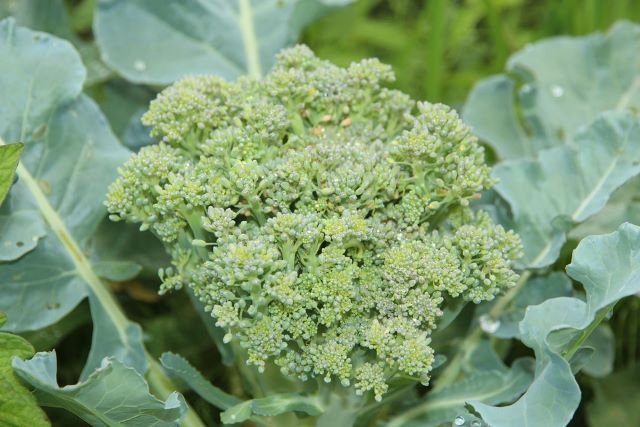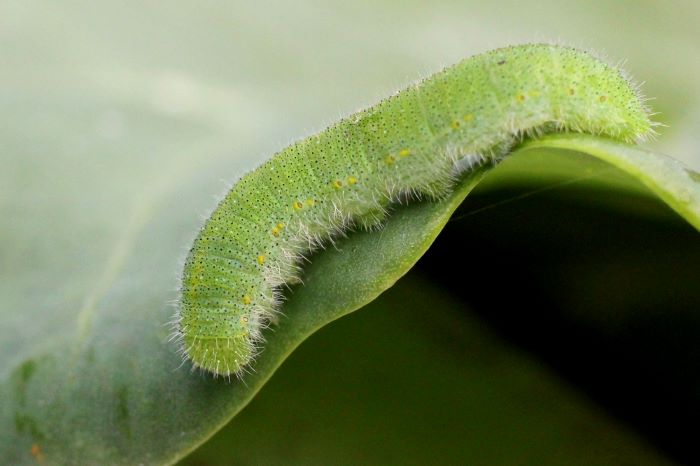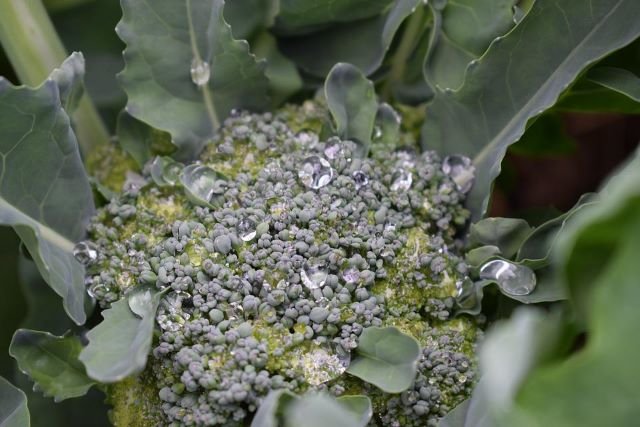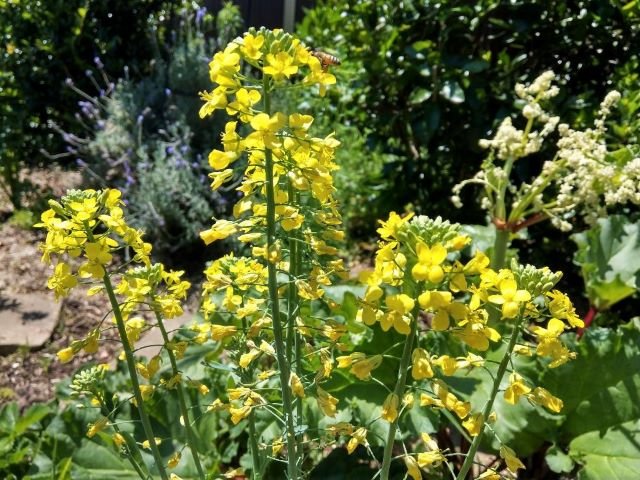Nutritious, delicious, and relatively easy to grow – just three reasons broccoli is one of the most popular crops in the garden and the kitchen. But if you’re finding your broccoli plants dying, it’s only natural that you’ll want to know what might be causing it.

The most common causes of broccoli plants dying are due to pest infestations and animal damage, disease, lack of nutrients, or temperatures that are too high. Fortunately, there’s plenty you can do as a gardener to try to remedy many of these issues.
Let’s take a closer look at how to spot and solve some of these potential causes of premature broccoli death. We want to make sure that you can nurture your crop all the way from seed to kitchen table with confidence!
Related: How To Grow Broccoli: Planting, Caring and Harvesting Broccoli
Table of Contents
Pests Can Cause Broccoli Plant Death
There are a number of critters, both large and small, that can munch happily on your hard-earned broccoli plants and lead to broccoli plants dying. Let’s take a glance at some of the most common ones:
Caterpillars
There are many different types of caterpillars that enjoy dining on brassicas. The most common that you’re likely to find on your broccoli plant is the cabbage worm. This is the grub that eventually turns into the cabbage white butterfly – a pretty creature, but one that has a voracious appetite in its infancy.

The caterpillars are easy to spot with the naked eye, commonly being green with fine yellow lines across its back. You may notice small holes appearing in your broccoli leaves. You may even see some leaves which appear skeletal since so much has been eaten away.
If caterpillars are left unchecked, the damage they can cause your broccoli may eventually result in death. Mild infestations can usually be kept in check by removing caterpillars by hand.
The best method of keeping them at bay, as with much pest control, is via prevention rather than treatment. Insect-proof mesh or fine netting over the plants can prevent the laying of caterpillar eggs in the first place.
Using floating row covers can also work, but the downside is they are likely to heat up your bed. For broccoli, this can be problematic, as they prefer things on the cool side. A barrier which doesn’t trap heat is preferable, especially in warmer climates.
You can also try planting trap crops, such as mustard plants, in an attempt to draw hungry caterpillars away.
Cabbage Root Fly
Cabbage root fly can appear on your broccoli in the form of small white larvae. These larvae often feed on the roots of your broccoli plant just below soil level.
This can cause stunted broccoli plant growth and eventually death. Too much root damage will prevent the broccoli plant from drawing the nutrients it needs.
As with the cabbage worm, putting in garden mesh can help prevent eggs from being laid in the first place. With cabbage root fly, the best time to ensure your broccoli plants are protected from insects is in the first weeks after it has been planted outdoors.
Birds
Insects aren’t the only winged creatures hungry for broccoli. Birds are an unfortunate air-borne pest when it comes to brassicas. They’ll happily munch through entire crops, leaving peck holes all over the leaves and stems.
As with other forms of pest infestation, too much damage can result in the plant withering and collapsing. The weight of certain birds can also cause irreparable damage to the crop.
Bird scarers such as scarecrows or other mechanical tools are often a temporary or an unreliable solution. The best tried and tested method for keeping birds off your broccoli plants is still netting.
Just make sure the netting is staked out so that it doesn’t rest on the broccoli itself. Otherwise, birds will simply peck through!
Rabbits and Deer
The moment you notice your broccoli is being eaten by some form of mammal is usually the moment it’s too late. Rabbits particularly can make short work of a young broccoli crop in just one evening, as can deer.
Try to avoid the heartache of seeing your hard earned broccoli seedlings, or even maturer plants, being decimated overnight. If your garden is easily accessible to wildlife, try to ensure you are keeping your broccoli and other brassica crops fenced off and secure.
Diseases That Can Cause Broccoli Plant Death

Club Root
Club root is a fungal disease that many brassica crops are susceptible to including broccoli. You might notice your broccoli plant becoming yellow, wilted, and eventually collapsing altogether.
Unfortunately, spotting the direct symptoms of the disease is only possible once you dig the broccoli plant up to see the roots. Club root will often cause the roots to swell, twist, and become distorted. This results in the broccoli plant becoming unable to collect the nutrients it needs.
If you do detect club foot in your broccoli crop, it unfortunately, means you need to remove all the plants in that bed. It’s best to burn your broccoli plants to destroy the fungal infection and then treat the soil to try to prevent it from remaining there.
Club root only really takes hold in acidic soil. Applying lime to your soil to increase its PH above neutral should help to prevent the disease from taking hold.
Trying to ensure your soil is well draining and that the area is kept regularly clear of old plant matter and weeds are also important steps to preventing club root.
Downy Mildew
If you see a white or gray substance forming on the underside of your broccoli leaves, this could well be the formation of downy mildew. This too is a fungal infection, affecting the visible parts of the plant. It may also be accompanied by damp, brownish spots.
Keeping your broccoli plants adequately spaced for good air circulation is a good way of guarding against downy mildew and many other fungal infections. Most of these infections thrive in damp, crowded conditions with no reliable air flow.
Give your broccoli plants at least 18 inches (45 cm) of space in their final planting position. And keep the area clear of old debris.
It is also possible to select and plant varieties of broccoli that have been selected for their fungal-resistant properties. Although it can never be guaranteed that your broccoli crop will not be affected, such varieties can be statistically less susceptible.
Bacterial Rot
With this rather gruesome sounding disease, you may notice the leaves and head of your broccoli starting to turn pale green. This could be followed by soft black spots starting to appear on various parts of the plant. As well as cracks along the stem that can ooze.
Unfortunately, it’s probably about as bad as it sounds and looks! This bacterial infection usually spells certain death for your broccoli plants and requires you to remove them from the bed.
Burn the old plants rather than composting them. Bacterium can survive in compost and be spread around the garden.
To prevent bacterial rot from taking hold, ensure your broccoli plants are in well-draining soil, plant disease-resistant varieties, and practice crop rotation.
Lack of Nutrients Can Cause Broccoli Plant Death
If you don’t think an animal or a disease is causing your broccoli to struggle, it could be that the conditions in which it is growing are unsuitable.
Broccoli is a heavy feeder and requires plenty of organic material in the soil to really thrive. Nitrogen in particular is a nutrient of choice for a healthy broccoli crop.
A lack of available nitrogen could be signaled by broccoli leaves towards the base of the plant starting to turn yellow. This yellow tinge can then gradually travel further up the broccoli.
If you suspect that nitrogen deficiency could be the cause, consider adding a nitrogen-focused organic fertilizer like this one to the soil.
It’s also a good idea to make sure that your bedding area has been thoroughly worked through with aged organic matter such as compost a few weeks prior to planting. You might also consider applying a gentle, slow-release, general-purpose fertilizer prior to the broccoli going into the ground just to give it the best possible start.
High Temperatures Can Cause Broccoli Plant Death

Broccoli is a relatively cool weather crop. The best time to plant broccoli is in the very early spring or very late summer. If your broccoli plant is exposed to temperatures above 80 °F (26 °C), this may place it at risk of bolting.
Bolting is effectively the process in which the plant moves on to its reproductive stage. In broccoli, this will involve it putting out flowers which will eventually turn to seed. Although it is not the same kind of ‘death’ that can be brought about prematurely by disease or pest infestation, it still prevents you from reaping the full edible benefits of your broccoli crop.

To protect against high temperatures, it’s a good idea to guard your broccoli against any hot spikes in the mercury by using a temporary shade cover. Remember, broccoli prefers full sun, so try not to keep it in the shade for longer than is necessary.
Further reading:
- Why Is My Broccoli Turning Yellow? (And how to fix it)
- What’s Eating My Broccoli? (And how to get rid of them!)
- Why Is My Broccoli Flowering? Causes and Solutions!
- Eating Broccoli Leaves and Flowers With Recipe Ideas
- Why Are My Cabbage Leaves Turning Yellow? With Solutions!
- 8 Kale Pests (And How to Get Rid of Them!)
